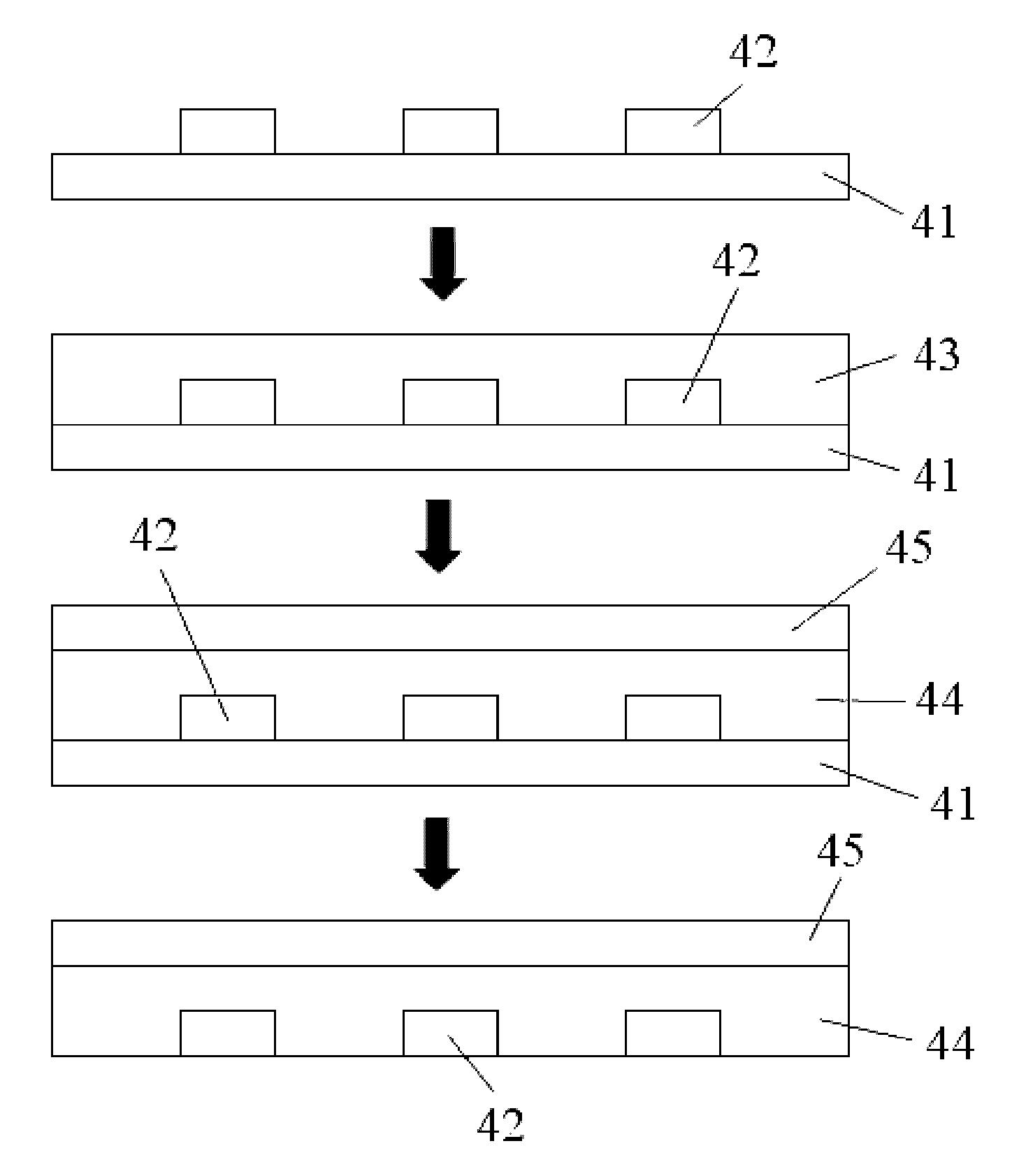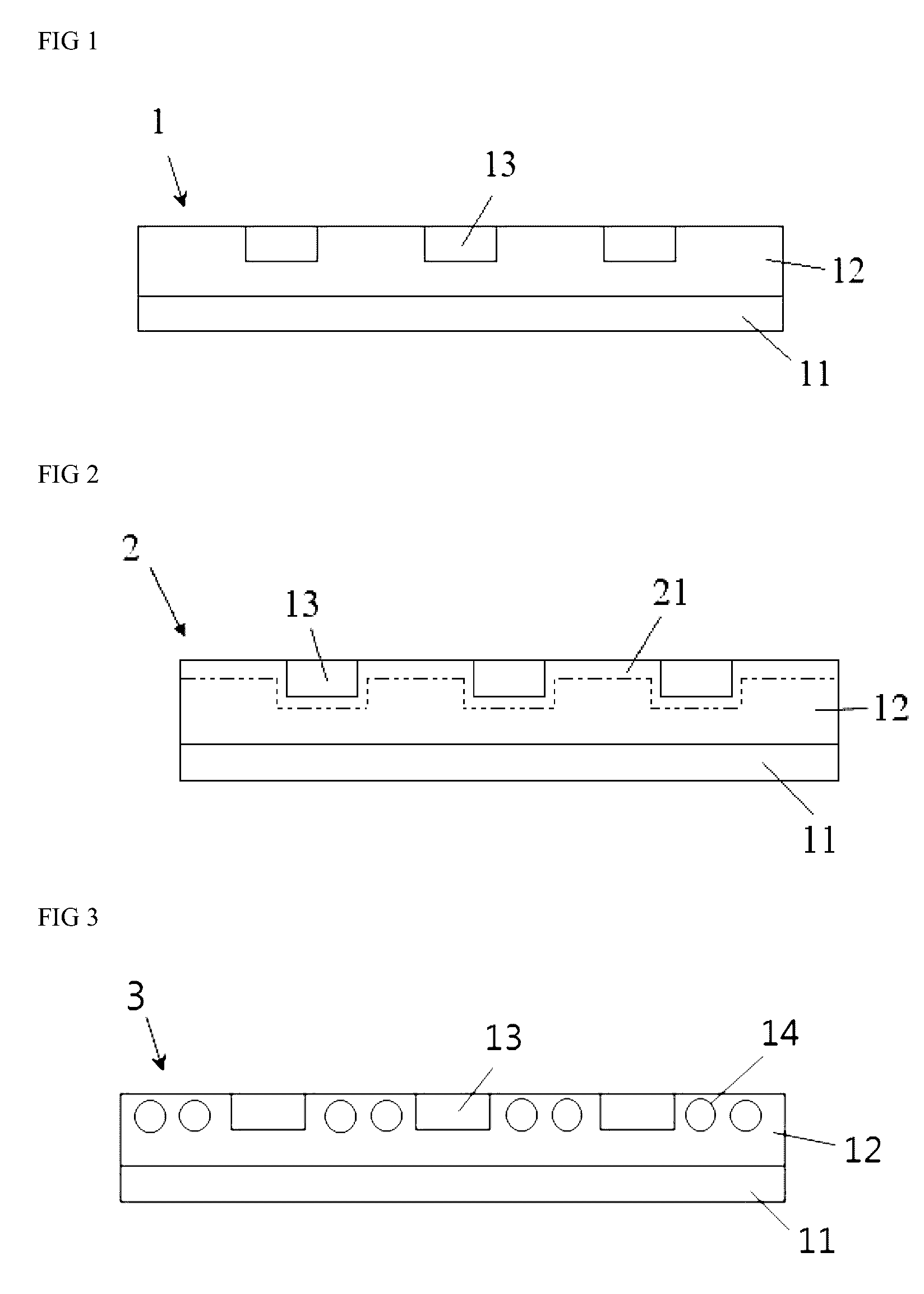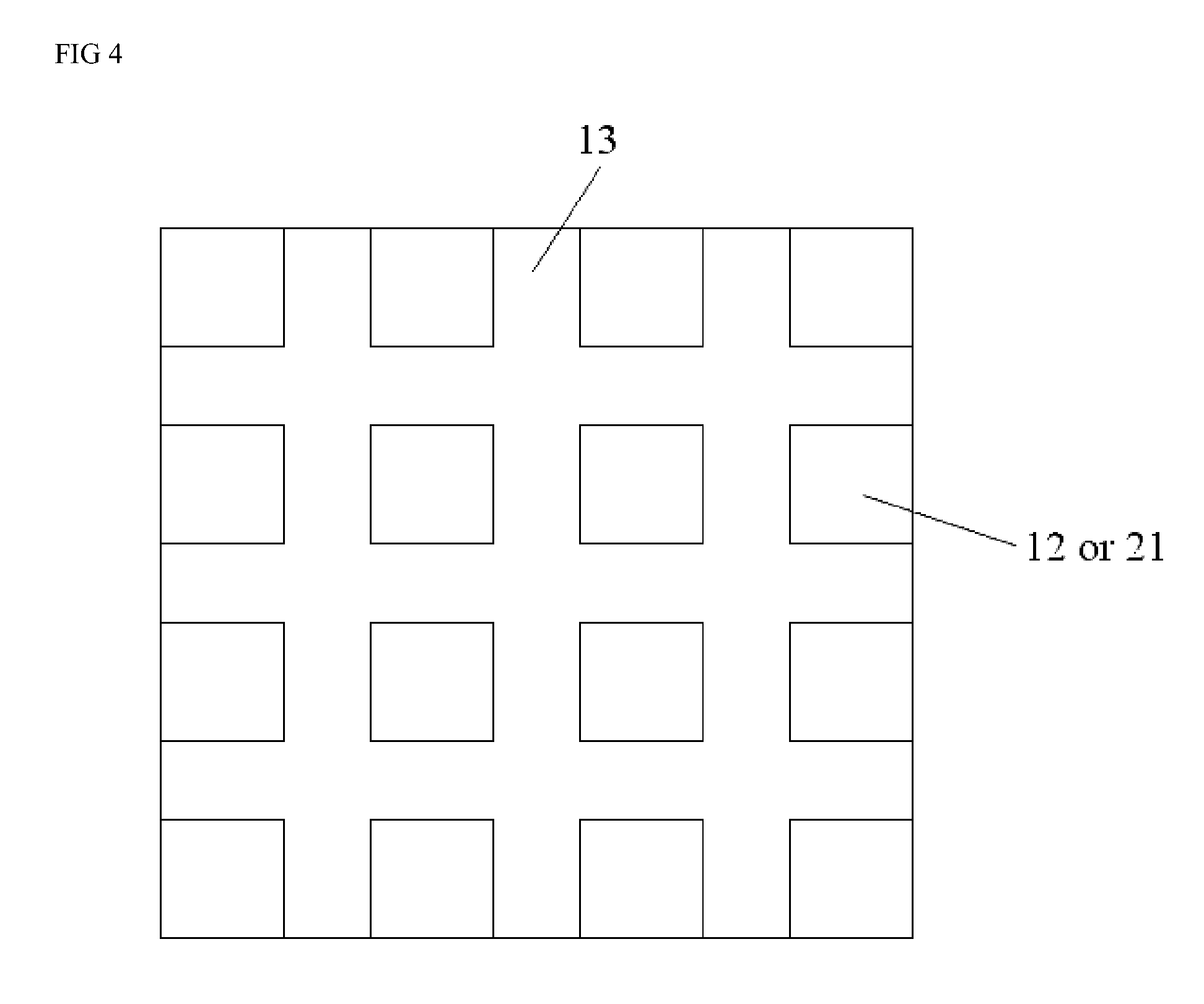Substrate for organic electronic device
a technology of organic electronic devices and substrates, which is applied in the direction of solid-state devices, sustainable manufacturing/processing, and final product manufacturing, etc., can solve the problems of difficult control of sheet resistance, uneven emission of light, so as to achieve excellent luminance and emission uniformity, and efficiently control the sheet resistance of the electrode
- Summary
- Abstract
- Description
- Claims
- Application Information
AI Technical Summary
Benefits of technology
Problems solved by technology
Method used
Image
Examples
example 1
[0077]A grid-shaped conductive pattern was printed on a surface of a PET film which was not treated with a primer by an offset gravure printing method using an Ag paste. In this operation, a line width of the conductive pattern was controlled to 20 μm, and a gap between lines thereof was controlled to 280 μm, and a height thereof was controlled to approximately 1 μm. Afterward, the printed conductive pattern was plasticized at a temperature of 150° C. for about 30 minutes. Subsequently, a UV curable adhesive composition (NOA65, Norland Products Inc.) was coated on a surface of the PET film on which the conductive pattern was formed, and a glass substrate was laminated thereon and compressed with a rubber roller to sufficiently spread the composition. Afterward, an adhesive layer was formed by radiating a UV ray (2 J / cm2) onto the composition. After the formation of the adhesive layer, the PET film was peeled off, thereby obtaining a substrate for an OED. FIGS. 7 and 8 show images of...
example 2
[0078]A substrate was manufactured by the same method as described in Example 1, except that, in the formation of a conductive pattern, a line width 40 μm, a gap between lines 260 μm, and a height about 2 μm were controlled.
example 3
[0079]A grid-shaped conductive pattern was printed on a surface of a PET film which was not treated with a primer by an offset gravure printing method using an Ag paste. In this operation, a line width of the conductive pattern was controlled to 20 μm, a gap between lines thereof was controlled to 280 μm, and a height thereof was controlled to approximately 1 μm. Afterward, the printed conductive pattern was plasticized at a temperature of 150° C. for about 30 minutes. Subsequently, a coating solution (TYT-80-01, Toyo ink) for forming a surface layer was coated on a surface of the PET film on which the conductive pattern was formed, dried at 100° C. for about 10 minutes, and cured by radiating a UV ray, thereby forming a surface layer. Subsequently, a UV curable adhesive composition (NOA65, Norland Products Inc.) was coated on a substrate on which the conductive pattern and the surface layer were formed, and a glass substrate was laminated thereon and compressed with a rubber roller...
PUM
 Login to View More
Login to View More Abstract
Description
Claims
Application Information
 Login to View More
Login to View More - R&D
- Intellectual Property
- Life Sciences
- Materials
- Tech Scout
- Unparalleled Data Quality
- Higher Quality Content
- 60% Fewer Hallucinations
Browse by: Latest US Patents, China's latest patents, Technical Efficacy Thesaurus, Application Domain, Technology Topic, Popular Technical Reports.
© 2025 PatSnap. All rights reserved.Legal|Privacy policy|Modern Slavery Act Transparency Statement|Sitemap|About US| Contact US: help@patsnap.com



